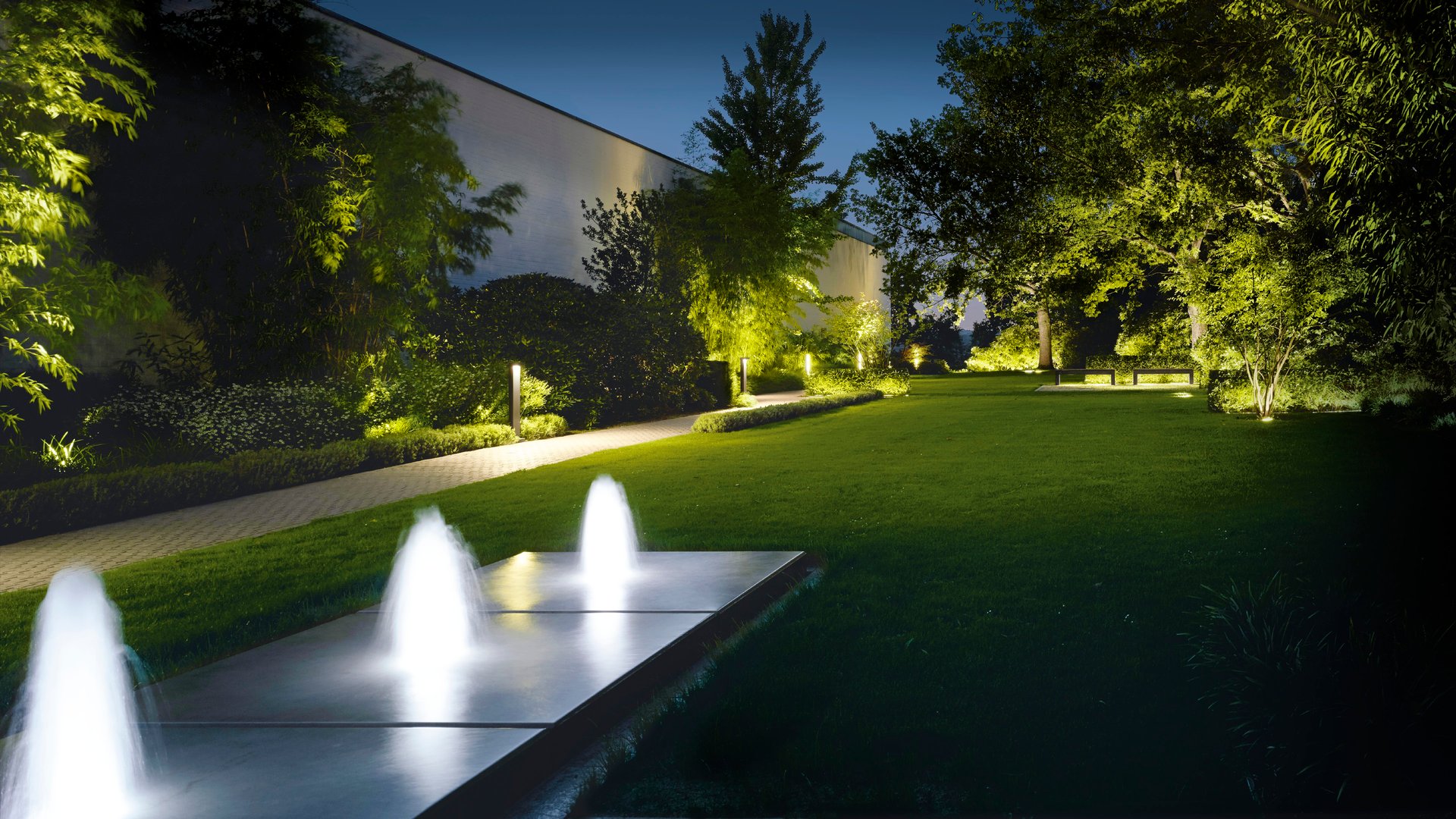
A well-kept garden is part of our living space, if not the heart of our home. Good lighting in a private garden brings the living space and garden together. It is recommended that islands should be created here – for example the separate illumination of ponds, flowerbeds, groups of trees or even sculptures. Ideally, the light colour here should be 3000 K or lower. In order to be able to take account of individual occasions at any time, there should be different switching options for the garden illumination. We prefer dimmable luminaires in order to implement various atmospheric lighting scenarios.
Portable luminaires are also ideal for private gardens to adapt the light to the growth of the plants. In this way, small changes as well as seasonal adjustments can easily be implemented. Portable systems that are easy to integrate are ideal for finished gardens. A mixture of unshielded, shielded and directed light ensures that the private garden also comes into its own after the dark.
Światło nadaje ogrodowi strukturę
Three zones with individual luminance define the space.

Illumination in the background of the garden

Supplemented by illumination in the centre part of the garden

Complete illumination of the green space

The drawing shows the arrangement of the luminaires in the garden example and the division into three illumination zones:
Unshielded luminaires have a certain glare and therefore are suitable only with reservations for illuminating a garden used as a living area. However, they are extremely effective for providing a signal effect in driveways, house entrances, car parks and for park footpath illumination. To downgrade the glare, opalised luminaire glass with as large a surface area as possible should be used. The unshielded light ensures good face recognition. Shielded luminaires, usually in the form of bollards or wall luminaires on the wall or house, are highly versatile, and are ideal for illuminating paths, flowerbed borders and property boundaries.
Luminaires with directed light, such as floodlights, in-ground luminaires, surface washers, spotlights and bollards provide selective illumination that gives the garden atmospheric depth and contours. The depth of the space can be differentiated through the specific use of different luminance levels. A distinctive backdrop effect can be achieved by subdividing the space into areas with foreground, centre and background illumination. The greater the distance from the house, the higher the output of the luminaires should be.
Example layout for garden lighting
Background: The end of the plot of land is illuminated, forming a clear boundary. Besides in-ground luminaires, which light up the hedge, bollards are used to illuminate the rear part of the path. The light on the property boundaries gives a feeling of safety.
The central part of the garden is fitted out with seating elements. The illumination is effected using in-ground floodlights and floodlights mounted in the tree. The luminous intensity/luminance is somewhat lower here than in the background illumination.
There are comparatively weak lighting accents in the foreground for trees, bushes and fountains.
The entire scene is glare-free.
Tree illumination
These three pictures show examples of how a free-standing tree could be illuminated.


